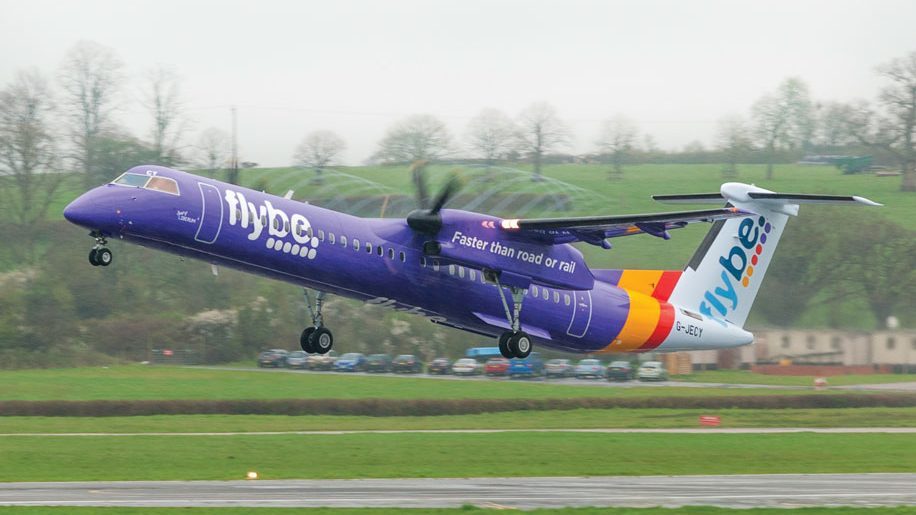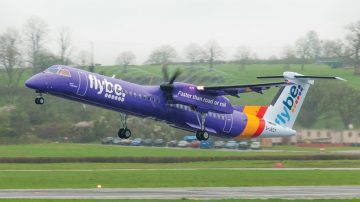
Domestic services may often be the poor relation of glitzier international flights, but they are no less a crucial part of airline operations.
Last year, Flybe chief executive Christine Ourmières-Widener accused Edinburgh airport of favouring long-haul international airlines. Reported in The Scotsman, she said that it prioritised long-haul over domestic services. Edinburgh denied this, although there’s no doubt that the airport rolls out the red carpet for international carriers, especially long-haul ones, but neglects to do the same for domestic carriers. Flybe feels miffed because it carries 645,000 passengers a year on more than a dozen routes in and out of Edinburgh.
Edinburgh airport told The Scotsman: “We have a strong relationship with all of our carriers and display parity and equity to all of them. We focus on… ensuring the maximum number of passengers benefit from the easiest-to-use facilities and shortest journey times, which tends to result in stand allocations based on size of aircraft.”year, Flybe chief executive Christine Ourmières-Widener accused Edinburgh airport of favouring long-haul international airlines. Reported in The Scotsman, she said that it prioritised long-haul over domestic services. Edinburgh denied this, although there’s no doubt that the airport rolls out the red carpet for international carriers, especially long-haul ones, but neglects to do the same for domestic carriers. Flybe feels miffed because it carries 645,000 passengers a year on more than a dozen routes in and out of Edinburgh.
In truth, airports prefer international over domestic services. The former is prestigious, and generates more revenue for the economy. Local businesses benefit from global connectivity for sales missions and so on.
Indeed, some airports provide financial incentives to international carriers. British Airways was wooed by Pittsburgh and the state of Pennsylvania with US$3 million of funding for its route starting in April this year, while Qatar Airways launched its Cardiff service with £1 million of help from the Welsh government, which owns the airport.
But there are other matters to take into account when it comes to domestic services. Consider those 645,000 Flybe passengers at Edinburgh who also have spending power. Domestic aviation, although seldom profitable, enables journeys to be undertaken that would be time-consuming by surface. This is especially true of Flybe, whose regional services create links between Manchester-Southampton, Cardiff-Edinburgh and Birmingham-Aberdeen.
Consider also that BA links millions of travellers in the regions to London Heathrow and Gatwick every year. A good proportion of these are transferring on to destinations worldwide. Without them, the profitability
of some BA long-haul routes would be jeopardised.
So domestic flights have their place despite the fact that “they are the most challenging of operations”, according to aviation expert John Strickland, director of JLS Consulting. In Europe, domestic aviation tends to be short-haul, which presents its own set of problems.
“Fuel consumption is a significant cost, as is maintenance, which is a heavier burden owing to the large number of short flights,” Strickland says. “Staff productivity can be lower than for long-haul services because of the amount of ground time between flights. Then there are multiple extra charges that inflate the ticket price, such as ATC [air traffic control], airport fees and the UK’s APD [air passenger duty]” – the last of which is charged per sector on domestic flights rather than per trip for international journeys. “These take up a larger share of the average ticket price for many domestic services where most customers are paying lower fare levels,” he explains.
Costly business
But that’s not all. People in the UK imagine that because a product is “domestic”, it must be cheaper than “international”. This is something we see all the time in relation to both hotels and airlines. It is noticeable for domestic aviation, which might be considered a “Cinderella” because the flights usually do not operate from the swankiest areas of an airport, while the on-board product is fairly basic and the aircraft used may not be the most up-to-date.
The typical domestic passenger will invariably compare that with his or her international experience. And domestic flight prices are compared with the cost of going by road or rail. It means domestic flights are sold as cheaply as possible (bearing in mind that supply and demand does inflate rates at busy times) so little wonder that it is difficult, if not impossible, for any airline to make money on domestic operations. For evidence, refer to the financial reports of BA and Flybe.
British Airways, which in its BEA days had a monopoly on domestic flying, now faces competition from low-cost carriers (LCCs). If that is the case then why doesn’t it lower its domestic fares to and from Heathrow? Of course, BA relies on its domestic flights to feed its international services. But there’s no escaping the fact that the rates can be astronomical.
Writing this on a Sunday morning, I checked BA’s prices for London-Edinburgh for the following morning. Not only were most of the flights fully booked in both classes but BA was asking almost £300 for Edinburgh, with business class at about £400 for one way. If I were to return from the Scottish capital on the Tuesday morning, the one-way prices and availability were roughly similar. This is because BA operates its Heathrow domestic services to benefit transfer rather than point-to-point travellers. So international availability is limited at peak times.
BA sets itself apart from others by having a domestic business class. You might ask why anyone might want to pay £600-plus for a London-Edinburgh return. It’s because BA decided to introduce Club Europe on domestic routes to compete with the many foreign airlines that were poaching its regional passengers. Premium fare passengers flying Edinburgh-Frankfurt-Singapore with Lufthansa or Manchester-Dubai-Delhi with Emirates enjoy premium recognition throughout, but until recently a BA passenger booked in first or business class out of London would have to rough it on the one-class connection.
As regards fares, of course BA also has lower domestic rates to compete with Easyjet. But these tend to be off-peak travel and require days, if not weeks, of advance booking. Peak fares tend to be high. Let’s face it, £600 could buy a New York excursion return with BA. That is 6,800 miles of air travel rather than 660 for a London-Edinburgh return.
The answer lies in the trade term known as “pro-rate”. Most people do not realise that point-to-point travellers over BA’s domestic network are subsidising those who are connecting to international services using through tickets. To keep its international fares from the regions competitive, BA splits the ticket price between its domestic and international divisions.
All airlines carry out this practice, and the tariff calculations and the way that revenue is apportioned remains a closely guarded secret. What it means, says Strickland, is that “the domestic part of the operation can end up with crumbs as revenue is shared with long-haul flights”.
BA is a network carrier. Low-cost carriers such as Easyjet do not suffer this issue because they are solely point-to-point and, at the time of writing, do not interline. It means Easyjet knows exactly how much revenue it would earn per seat on a flight linking Glasgow to London Stansted or Edinburgh to Gatwick.
A few countries are blessed with not having the bother of a domestic network, or a limited one – think KLM of the Netherlands, or Swiss. Environmentalists criticise UK domestic aviation, saying travellers ought to take the train. But they forget that rail isn’t always a feasible option and that many domestic passengers are flying simply to make connections. In addition, Flybe operates the vast majority of its domestic routes with small turbo-prop aircraft, which are more environmentally friendly than larger jets.
Mainland Europe has high-speed rail networks, which means loss-making domestic networks can be slimmed down (see “The air-rail trail” in December 2018-January 2019). Airlines need operate only a few well-timed flights linking to international services – which frees up slots for more lucrative long-haul services.
As the UK’s only high-speed track is between London and Folkestone, we lack the air-rail flourishing of mainland Europe. And with HS2 years away, if it will be built at all, it is likely domestic aviation will retain its importance.
International relations
A classic example of an airline being seen as giving preference to an international service is Easyjet. From this month, it will replace its London Gatwick-Aberdeen route with one to Dusseldorf. Aberdonians are naturally unhappy. I am told the flights were busy, but in aviation it’s the yield per seat that is important, not just whether they are popular. Easyjet told Business Traveller: “We will cease Aberdeen owing to a reduction in demand. We concentrate our efforts on maintaining and developing routes which prove most popular with passengers.”












